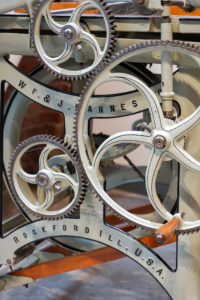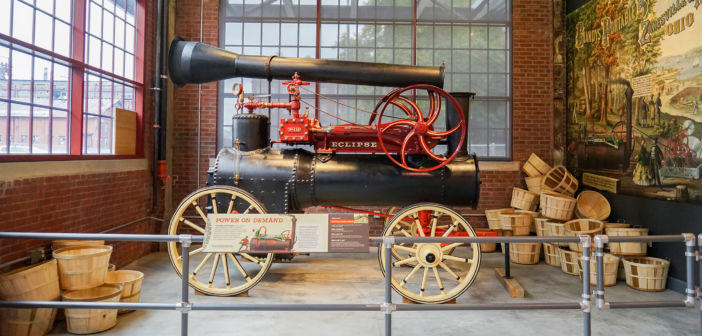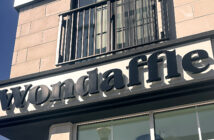Among the dozens of buildings and structures that made up the Bethlehem Steel plant, a two-story electrical repair shop blended in with the surrounding brick buildings.
Former Bethlehem Steel electrical engineer J. Michael Zaia remembers being one of 100 men who filled that building each day — 70 worked on the ground floor repairing the motors that ran the plant’s machines, while another 30 engineers worked in offices upstairs planning new projects for the company.
“It was a great place to work,” J. Michael Zaia said. “For me, it was a different challenge everyday.”
The building, like the industry, was a hub of activity and rarely — if ever — quiet.
The Bethlehem plant began to shut down in 1995, but the electrical repair shop had a new purpose in its future — one that would make it more than just another brick building in an abandoned steel plant.
The National Museum of Industrial History, a Smithsonian affiliate, opened to the public in August 2016, with more than 200 industrial artifacts displayed on the former motor repair floor.
Plans for a museum commemorating the United States’ industrial history were announced in 1999, but the recession and consequent downsizing put the museum’s opening on hold for years.
Glenn Koehler, the marketing and outreach coordinator, said when he joined the museum staff in December 2015, the building was nearly empty. In a matter of months, the industrial artifacts — some weighing several tons — were assembled to bring the National Museum of Industrial History to life.
“About a little over two years ago, the floor was still rocks,” Koehler said. “They had to pour the foundation for the Corliss (steam engine) before they did anything else because it’s so heavy — it’s 115 tons — that if they just set it on a regular flooring it would crack everything.”

The Circular Ripsaw, such as this one made by W.F. & John Barnes Co in 1886, has a circular blade made for cutting wood along the grain and can rip 600 feet of one-inch pine an hour. The National Museum of Industrial History opened in August of 2016. (Marlee Deutsch/B&W Staff)
The museum’s main gallery is divided into four sections that commemorate the 1876 Centennial Exposition and the iron and steel, silk, and energy industries.
Visitors range from school-aged children to senior center groups. Upon entry, they are greeted by Centennial Hall, filled with machines that would have been seen at the 1876 Centennial Exposition, including 22 Smithsonian artifacts.
For now, the machines in Centennial Hall are stationary, and the exhibit is quiet. Curator of collections Andria Zaia, daughter of J. Michael, hopes to add soundscapes this fall, placing visitors at the Centennial Exposition with orchestra music or inside a loud machine shop with line shafts running. Additionally, she’d like to get the machines that are able to run in motion.
“Industry wasn’t static, and the sounds were maybe not as unharmonious as we would suspect,” she said.
The museum’s iron and steel gallery serves both to educate visitors on the history of Bethlehem Steel and to memorialize the corporation that dominated the lives of residents in the Lehigh Valley for decades. Koehler said former Bethlehem Steel workers visit the museum from time to time, and they always exhibit pride in the work they did with the company.
Berks County resident Willer Haas worked in the construction division of Bethlehem Steel from 1951-1953. Even as a former employee at the corporation, he felt like he learned something from the museum’s exhibits.
“This is terrific,” Haas said. “I’m really learning and refreshing my memory on a lot of stuff. It’s amazing. I think it’s a great thing they’re doing here.”
Although Bethlehem Steel provided a livelihood to most Bethlehem families, non-employees were prohibited from entering the plant.
Anne Evans grew up in Bethlehem and her father worked as a plumber for Bethlehem Steel. Now retired, Evans volunteers with her husband at the National Museum of Industrial History — in the building where her uncle formerly worked. She’s fascinated by the many buildings that she never came close to growing up.
“Truly, this whole area was off limits to all of us,” Evans said. “We go to concerts at the pavilion at the SteelStacks, and I never sit there without thinking, ‘Wow, I can’t believe I’m this close to all this stuff.’”
The additional galleries explore the energy and silk industries, which Koehler calls “a lost history.”
“Now the only time you hear the words ‘silk mill’ around here is when you hear about them being converted into apartments and lofts,” Koehler said. “People don’t really think about the history of what went on there and what was manufactured there. I always laugh because when everybody thinks Lehigh Valley industry, they think Bethlehem Steel, but at one point there were more people employed at the silk mills here than were employed at the steel.”
Bethlehem was a center of industry for decades, but industrial work wasn’t concentrated in only the Lehigh Valley. Andria Zaia said the industrial history that built America is reflected across the country.
Koehler said this history is important to understand and commemorate because the Industrial Revolution brought the country from being an agrarian society to a manufacturing society, giving the U.S. the international attention it has today.
He laughs when people say the manufacturing business is dead, and he hopes preserving this history will show the public that these industrial stories of the past still continue in the U.S. today.
The museum’s collection continues to grow thanks to donors like former Bethlehem Steel workers and industrial model collector Daniel Diaz del Castillo Brodigan. Two other donors paid for the extraction of two mosaics from Bethlehem Steel’s former printery, which was demolished in September. However, because of the lack of space, many donations are put into storage.
The eventual addition of more artifacts will only allow the museum to exhibit more facets of industrial history. By sharing this knowledge, Andria Zaia hopes the museum will inspire future generations.
“We need to understand what that industrial history is — learning about how people were inspired a hundred years ago to find solutions to problems — because that’s what sparks innovation,” she said. “So it’s really this spirit of innovation that we are hoping to inspire in the public.”






Comment policy
Comments posted to The Brown and White website are reviewed by a moderator before being approved. Incendiary speech or harassing language, including comments targeted at individuals, may be deemed unacceptable and not published. Spam and other soliciting will also be declined.
The Brown and White also reserves the right to not publish entirely anonymous comments.